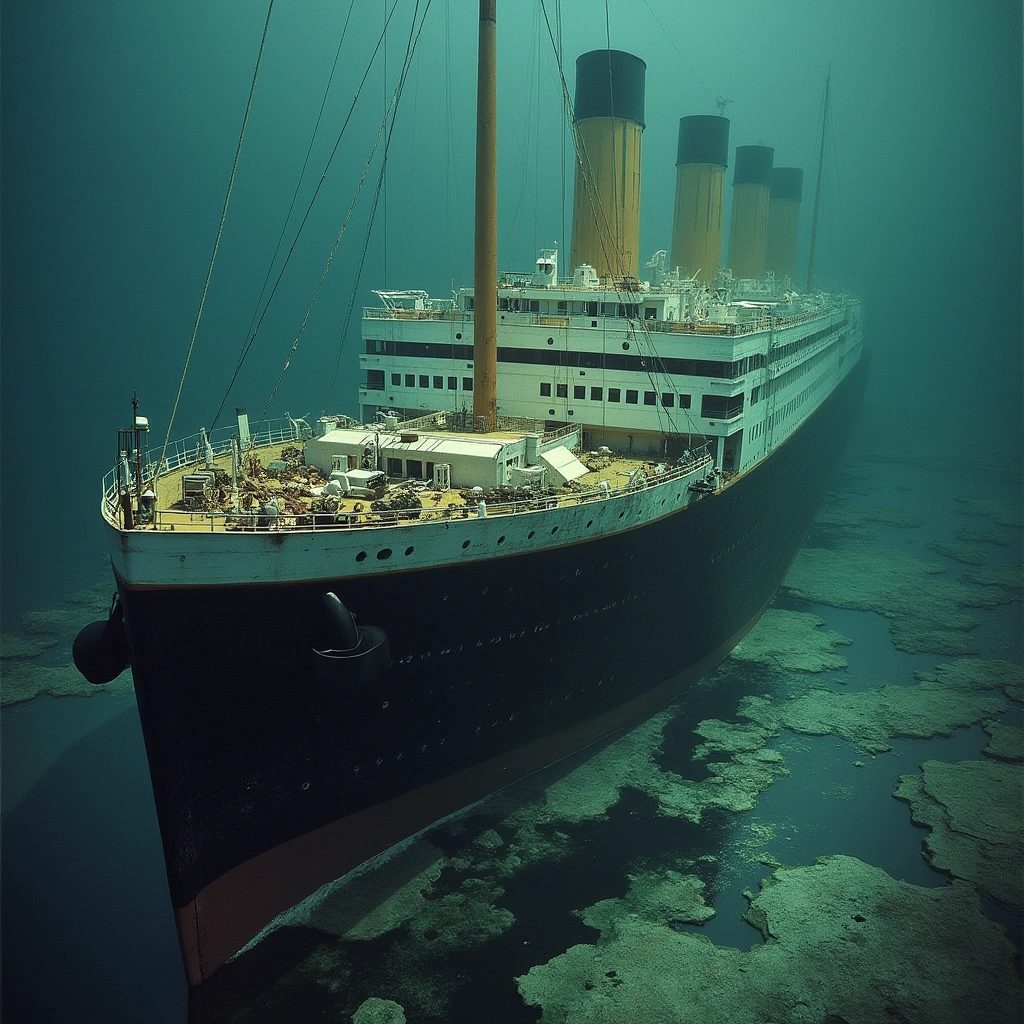The RMS Titanic remains one of the most well-known maritime disasters in history, sinking on April 15, 1912, after colliding with an iceberg. More than 1,500 passengers and crew members perished in the freezing waters of the North Atlantic. Despite extensive exploration of the Titanic wreck site, no human remains have ever been found.
This has led to persistent questions: Why are there no skeletons at the Titanic site? Could bodies still be trapped inside the wreck? The answer lies in environmental factors, biological decomposition, ocean currents, and historical recovery efforts.
The Titanic Wreck Site: A Deep-Sea Graveyard
The Titanic wreck lies approximately 12,500 feet (3,800 meters) beneath the ocean surface, about 370 miles off the coast of Newfoundland, Canada. It was discovered in 1985 by Dr. Robert Ballard, revealing a shipwreck that had deteriorated significantly over the decades.
At this depth, the environment is extreme:
- High water pressure: Nearly 6,500 pounds per square inch, which would crush most human-made objects.
- Near-freezing temperatures: The water remains at a constant 1-2°C (34-36°F), slowing decomposition but not preventing it.
- Total darkness: Without sunlight, marine life has adapted to feed on whatever organic matter it can find.
For more details on how deep-sea environments affect shipwrecks, check out NOAA’s research on deep-sea shipwrecks.
Why Human Remains Have Disappeared
1. The Role of Deep-Sea Scavengers and Microorganisms
The wreck site is not a static grave—it is an active ecosystem. Deep-sea scavengers such as:
- Crustaceans (amphipods, deep-sea crabs)
- Deep-sea fish (hake, grenadiers)
- Bacteria and fungi
quickly consume any organic material, including human remains. The process is much faster than on land, where bodies decompose due to exposure to air, insects, and microbial activity.
A key factor is Halomonas titanicae, a bacteria species that feeds on iron and organic material at the wreck site, significantly accelerating decay.
2. The Effect of Saltwater on Bones
Unlike other shipwrecks, such as the Vasa or the Mary Rose, which were found in low-oxygen environments where remains were preserved, Titanic sank in saltwater with strong currents. Over time:
- Bones dissolve in seawater, as calcium phosphate breaks down due to high salinity and acidic conditions.
- No skeletal remains have been found, not because they never existed, but because the ocean effectively “recycled” them.
For a detailed discussion on Titanic’s legacy, visit Smithsonian Magazine’s historical coverage.
The Impact of Ocean Currents on Remains
The Titanic wreck site is affected by strong underwater currents, which:
- Shift wreckage debris over time.
- Scatter any remaining small fragments across a large area.
- Prevent long-term preservation of human remains.
Even if skeletal remains had survived, they would have been moved far beyond the wreck site, making discovery nearly impossible.
What Happened to the Bodies After the Sinking?
1. Early Recovery Efforts
Immediately after the disaster, recovery ships, such as the Mackay-Bennett, were sent out to retrieve victims.
- Only 340 bodies were recovered, mostly those wearing life jackets who had floated to the surface.
- Many victims were buried at sea or in cemeteries in Halifax, Nova Scotia.
- Bodies trapped inside the ship or pulled underwater by sinking debris were never found again.
2. Were Any Bodies Trapped Inside the Titanic?
There is speculation that some passengers may have been sealed inside air pockets in the ship’s interior. However:
- After 112 years underwater, organic remains would have fully decomposed.
- The ship’s interior has collapsed due to corrosion, making it unlikely that bodies remain intact inside the wreckage.
Why Other Shipwrecks Have Preserved Skeletons, but Not Titanic
Some shipwrecks, such as:
- The Vasa (1628) – found in low-oxygen, brackish water.
- The Mary Rose (1545) – preserved in mud, limiting decomposition.
- The USS Monitor (1862) – found in cold, slow-moving water, which protected remains.
These shipwrecks were in conditions that allowed bones to survive for centuries, unlike the open high-salinity environment of the Titanic.
Ethical Concerns About Exploring the Titanic Wreck
Despite decades of exploration, no human remains have been found. Some experts believe that traces of remains may still exist in the wreck, embedded in sediment or within the ship’s structure. However, ethical concerns arise when considering future exploration:
- Should Titanic be treated as a grave site and left undisturbed?
- Is it ethical to remove artifacts or disturb potential human remains?
- Should future technology be used to scan for DNA traces?
These questions remain hotly debated among historians, archaeologists, and Titanic enthusiasts.
For more expert discussions, visit the Encyclopedia Titanica forums.
FAQs: Common Questions About Titanic’s Missing Remains
1. Were any human remains found at the Titanic site?
No confirmed remains have been found. Scientists believe that all organic material has decomposed due to the harsh deep-sea environment.
2. How long do bodies last underwater?
In cold water, bodies can last for weeks to months, but in deep-sea environments, bones dissolve within decades due to ocean chemistry.
3. Are there any Titanic victims’ belongings at the wreck site?
Yes, clothing, shoes, and personal items have been found, but human remains are absent.
4. Why were some bodies recovered while others weren’t?
Victims wearing life jackets floated to the surface and were recovered, while others sank and were lost.
5. Could DNA testing ever confirm human remains at the Titanic wreck?
Theoretically, traces of DNA could be found in sediment, but no efforts have been made to test this due to ethical concerns.
Conclusion
The mystery of why no human remains have been found at the Titanic wreck site is largely explained by environmental factors, biological decomposition, and historical recovery efforts. Unlike other shipwrecks, Titanic sank in an open, high-pressure, deep-sea environment, where bones dissolved over time.
Despite this, the wreck remains a powerful historical site, serving as a solemn reminder of the tragedy. The fascination with Titanic continues, but it is unlikely that human remains will ever be discovered.
Would you like more details on any specific section? Let me know! 🚢
